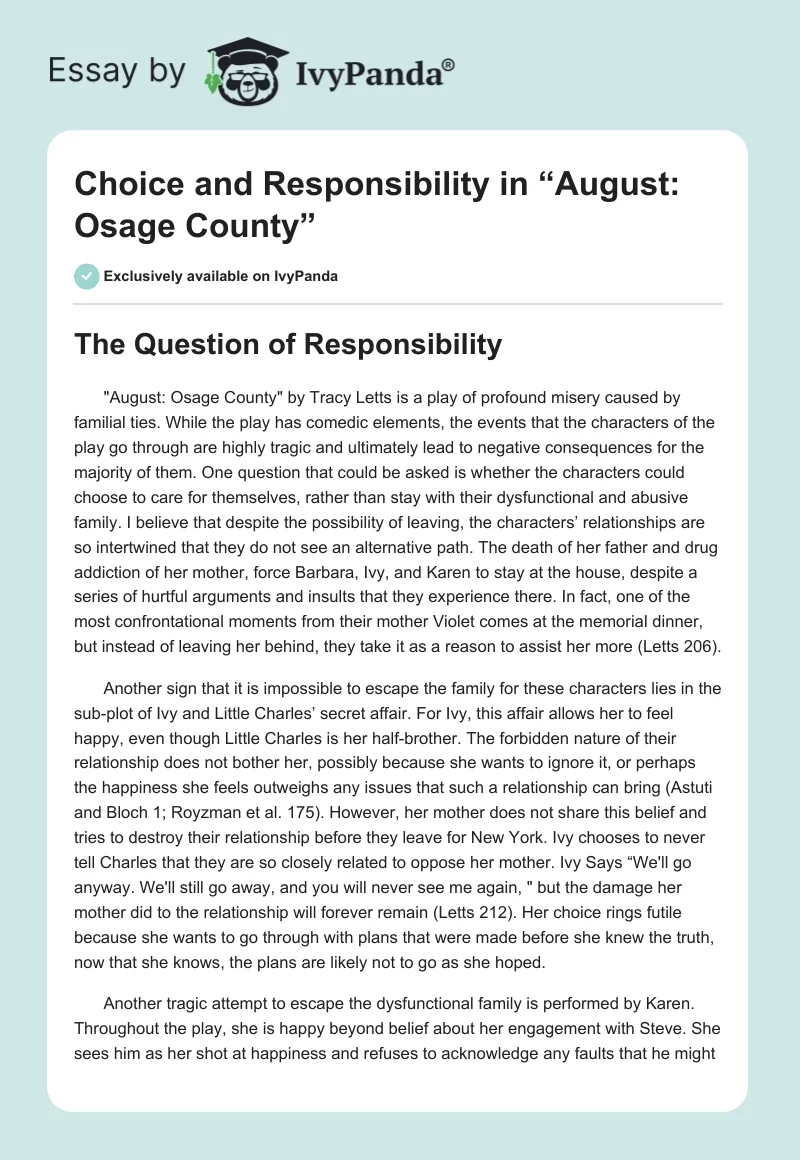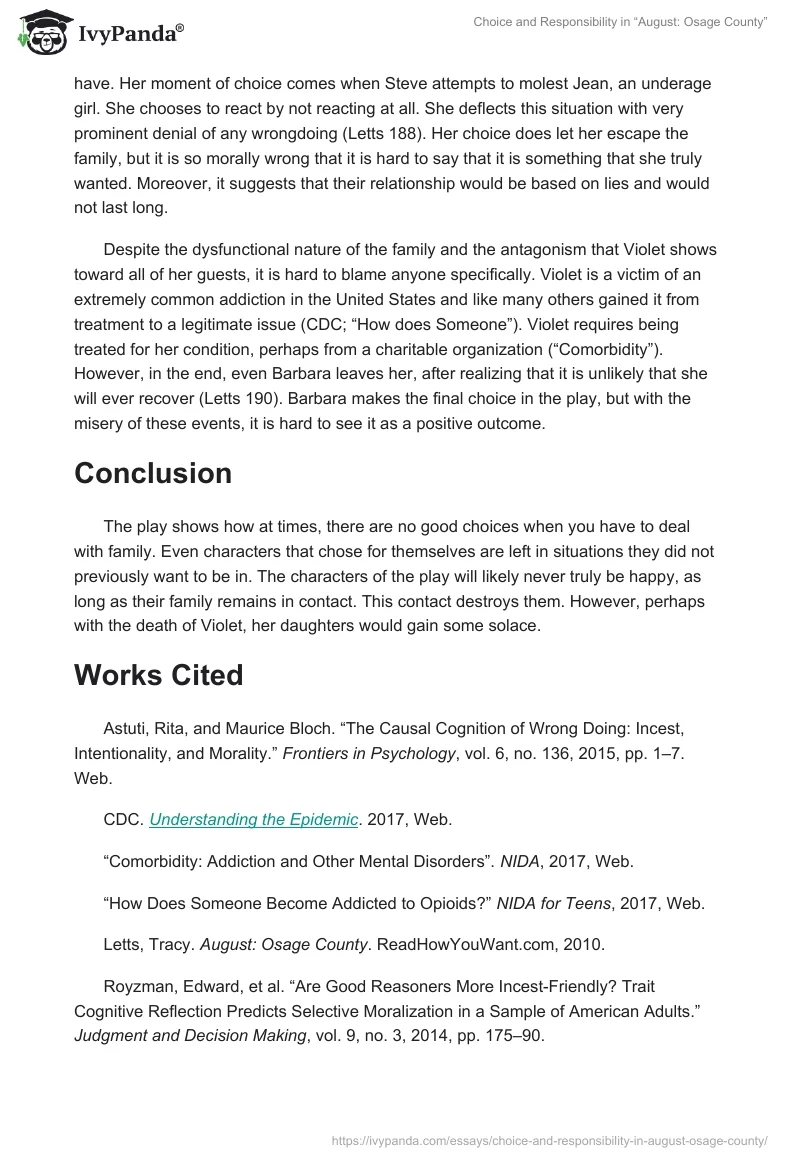The Question of Responsibility
“August: Osage County” by Tracy Letts is a play of profound misery caused by familial ties. While the play has comedic elements, the events that the characters of the play go through are highly tragic and ultimately lead to negative consequences for the majority of them. One question that could be asked is whether the characters could choose to care for themselves, rather than stay with their dysfunctional and abusive family. I believe that despite the possibility of leaving, the characters’ relationships are so intertwined that they do not see an alternative path. The death of her father and drug addiction of her mother, force Barbara, Ivy, and Karen to stay at the house, despite a series of hurtful arguments and insults that they experience there. In fact, one of the most confrontational moments from their mother Violet comes at the memorial dinner, but instead of leaving her behind, they take it as a reason to assist her more (Letts 206).
Another sign that it is impossible to escape the family for these characters lies in the sub-plot of Ivy and Little Charles’ secret affair. For Ivy, this affair allows her to feel happy, even though Little Charles is her half-brother. The forbidden nature of their relationship does not bother her, possibly because she wants to ignore it, or perhaps the happiness she feels outweighs any issues that such a relationship can bring (Astuti and Bloch 1; Royzman et al. 175). However, her mother does not share this belief and tries to destroy their relationship before they leave for New York. Ivy chooses to never tell Charles that they are so closely related to oppose her mother. Ivy Says “We’ll go anyway. We’ll still go away, and you will never see me again, ” but the damage her mother did to the relationship will forever remain (Letts 212). Her choice rings futile because she wants to go through with plans that were made before she knew the truth, now that she knows, the plans are likely not to go as she hoped.
Another tragic attempt to escape the dysfunctional family is performed by Karen. Throughout the play, she is happy beyond belief about her engagement with Steve. She sees him as her shot at happiness and refuses to acknowledge any faults that he might have. Her moment of choice comes when Steve attempts to molest Jean, an underage girl. She chooses to react by not reacting at all. She deflects this situation with very prominent denial of any wrongdoing (Letts 188). Her choice does let her escape the family, but it is so morally wrong that it is hard to say that it is something that she truly wanted. Moreover, it suggests that their relationship would be based on lies and would not last long.
Despite the dysfunctional nature of the family and the antagonism that Violet shows toward all of her guests, it is hard to blame anyone specifically. Violet is a victim of an extremely common addiction in the United States and like many others gained it from treatment to a legitimate issue (CDC; “How does Someone”). Violet requires being treated for her condition, perhaps from a charitable organization (“Comorbidity”). However, in the end, even Barbara leaves her, after realizing that it is unlikely that she will ever recover (Letts 190). Barbara makes the final choice in the play, but with the misery of these events, it is hard to see it as a positive outcome.
Conclusion
The play shows how at times, there are no good choices when you have to deal with family. Even characters that chose for themselves are left in situations they did not previously want to be in. The characters of the play will likely never truly be happy, as long as their family remains in contact. This contact destroys them. However, perhaps with the death of Violet, her daughters would gain some solace.
Works Cited
Astuti, Rita, and Maurice Bloch. “The Causal Cognition of Wrong Doing: Incest, Intentionality, and Morality.” Frontiers in Psychology, vol. 6, no. 136, 2015, pp. 1–7. Web.
CDC. Understanding the Epidemic. 2017, Web.
“Comorbidity: Addiction and Other Mental Disorders”. NIDA, 2017, Web.
“How Does Someone Become Addicted to Opioids?” NIDA for Teens, 2017, Web.
Letts, Tracy. August: Osage County. ReadHowYouWant.com, 2010.
Royzman, Edward, et al. “Are Good Reasoners More Incest-Friendly? Trait Cognitive Reflection Predicts Selective Moralization in a Sample of American Adults.” Judgment and Decision Making, vol. 9, no. 3, 2014, pp. 175–90.


